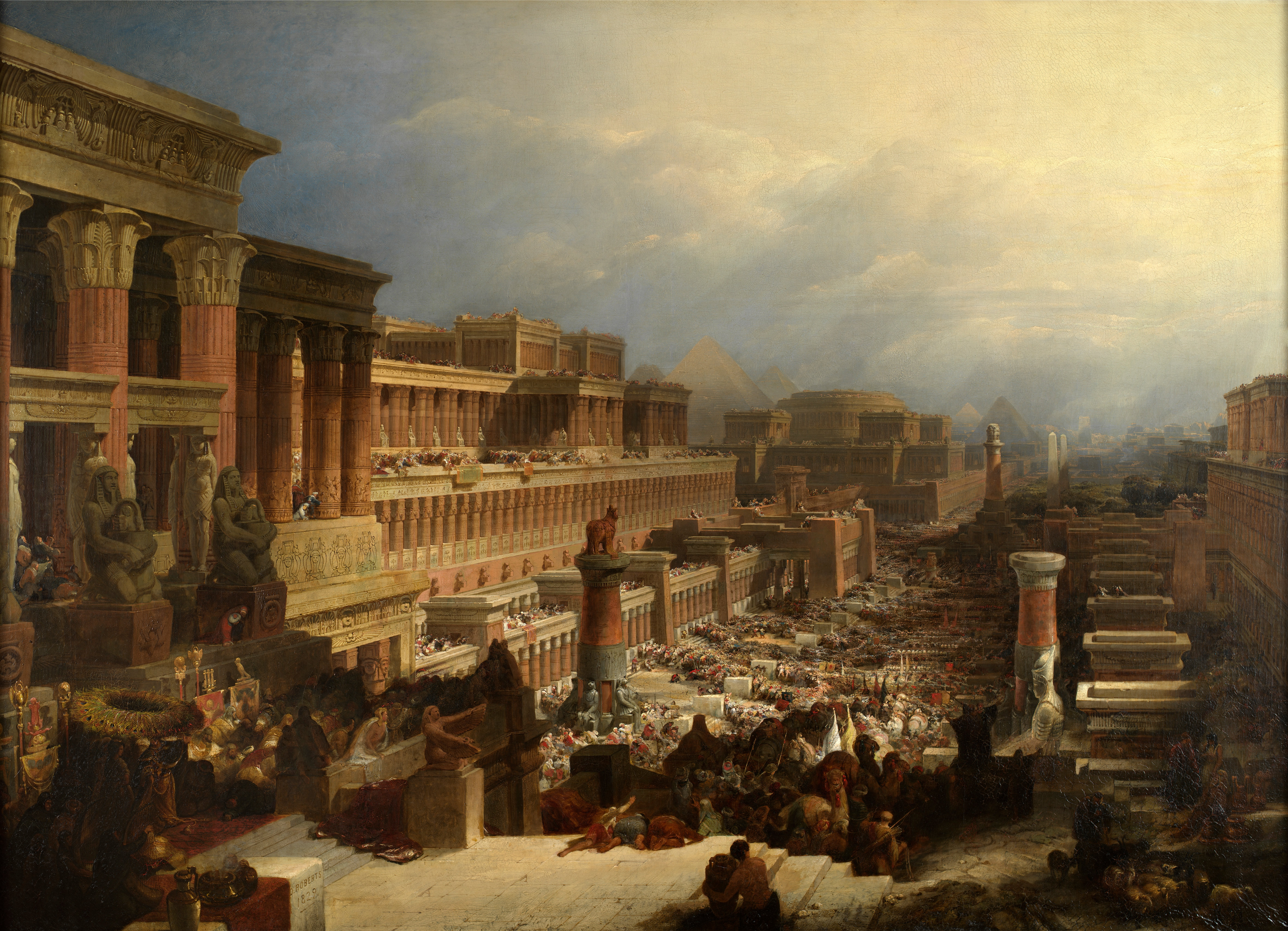
The Exodus
The Exodus (Hebrew: יציאת מצרים, Yəṣīʾat Mīṣrayīm: lit. 'Departure from Egypt'[a]) is the founding myth[b] of the Israelites whose narrative is spread over four of the five books of the Pentateuch (specifically, Exodus, Leviticus, Numbers, and Deuteronomy).
This article is about the events related in the Bible. For the second book of the Bible, see Book of Exodus. For other uses, see Exodus.
The consensus of modern scholars is that the Pentateuch does not give an accurate account of the origins of the Israelites, who appear instead to have formed as an entity in the central highlands of Canaan in the late second millennium BCE (around the time of the Late Bronze Age collapse) from the indigenous Canaanite culture.[1][2][3] Most modern scholars believe that some elements in the story of the Exodus might have some historical basis, but that any such basis has little resemblance to the story told in the Pentateuch.[4][5] While the majority of modern scholars date the composition of the Pentateuch to the period of the Achaemenid Empire (5th century BCE), some of the elements of this narrative are older, since allusions to the story are made by 8th-century BCE prophets such as Amos and Hosea.[5][6]
The story of the Exodus is central in Judaism. It is recounted daily in Jewish prayers and celebrated in festivals such as Passover. Early Christians saw the Exodus as a typological prefiguration of resurrection and salvation by Jesus. The narrative has also resonated with various groups in more recent centuries, such as among the early American settlers fleeing religious persecution in Europe, and among African Americans striving for freedom and civil rights.[7][8]
Hellenistic Egyptian parallel narratives
Writers in Greek and Latin during the Ptolemaic Kingdom (late 4th century BCE–late 1st century BCE) record several Egyptian tales of the expulsion of a group of foreigners connected to the Exodus.[84] These tales often include elements of the Second Intermediate Period ("Hyksos period") and most are extremely anti-Jewish.[85]
The earliest non-biblical account is that of Hecataeus of Abdera (c. 320 BCE) as preserved in the first century CE Jewish historian Josephus in Against Apion and in a variant version by the first-century BCE Greek historian Diodorus.[86] Hecataeus tells how the Egyptians blamed a plague on foreigners and expelled them from the country, whereupon Moses, their leader, took them to Canaan.[87] In this version, Moses is portrayed extremely positively.[84]
Manetho, also preserved in Josephus's Against Apion, tells how 80,000 lepers and other "impure people", led by a priest named Osarseph, join forces with the former Hyksos, now living in Jerusalem, to take over Egypt. They wreak havoc until the Pharaoh and his son chase them out to the borders of Syria, where Osarseph gives the lepers a law code and changes his name to Moses. The identification of Osarseph with Moses in Manetho's account may be an interpolation or may come from Manetho.[88][89][87]
Other versions of the story are recorded by the first-century BCE Egyptian grammarian Lysimachus of Alexandria, who set the story in the time of Pharaoh Bakenranef (Bocchoris), the first-century CE Egyptian historian Chaeremon of Alexandria, and the first-century BCE Gallo-Roman historian Gnaeus Pompeius Trogus.[90] The first-century CE Roman historian Tacitus included a version of the story that claims that the Hebrews worshipped a donkey as their god to ridicule Egyptian religion, whereas the Roman biographer Plutarch claimed that the Egyptian god Seth was expelled from Egypt and had two sons named Juda and Hierosolyma.[91]
The stories may represent a polemical Egyptian response to the Exodus narrative.[92] Egyptologist Jan Assmann proposed that the story comes from oral sources that "must [...] predate the first possible acquaintance of an Egyptian writer with the Hebrew Bible."[87] Assmann suggested that the story has no single origin but rather combines numerous historical experiences, notably the Amarna and Hyksos periods, into a folk memory.[93]
There is general agreement that the stories originally had nothing to do with the Jews.[84] Erich S. Gruen suggested that it may have been the Jews themselves that inserted themselves into Manetho's narrative, in which various negative actions from the point of view of the Egyptians, such as desecrating temples, are interpreted positively.[94]